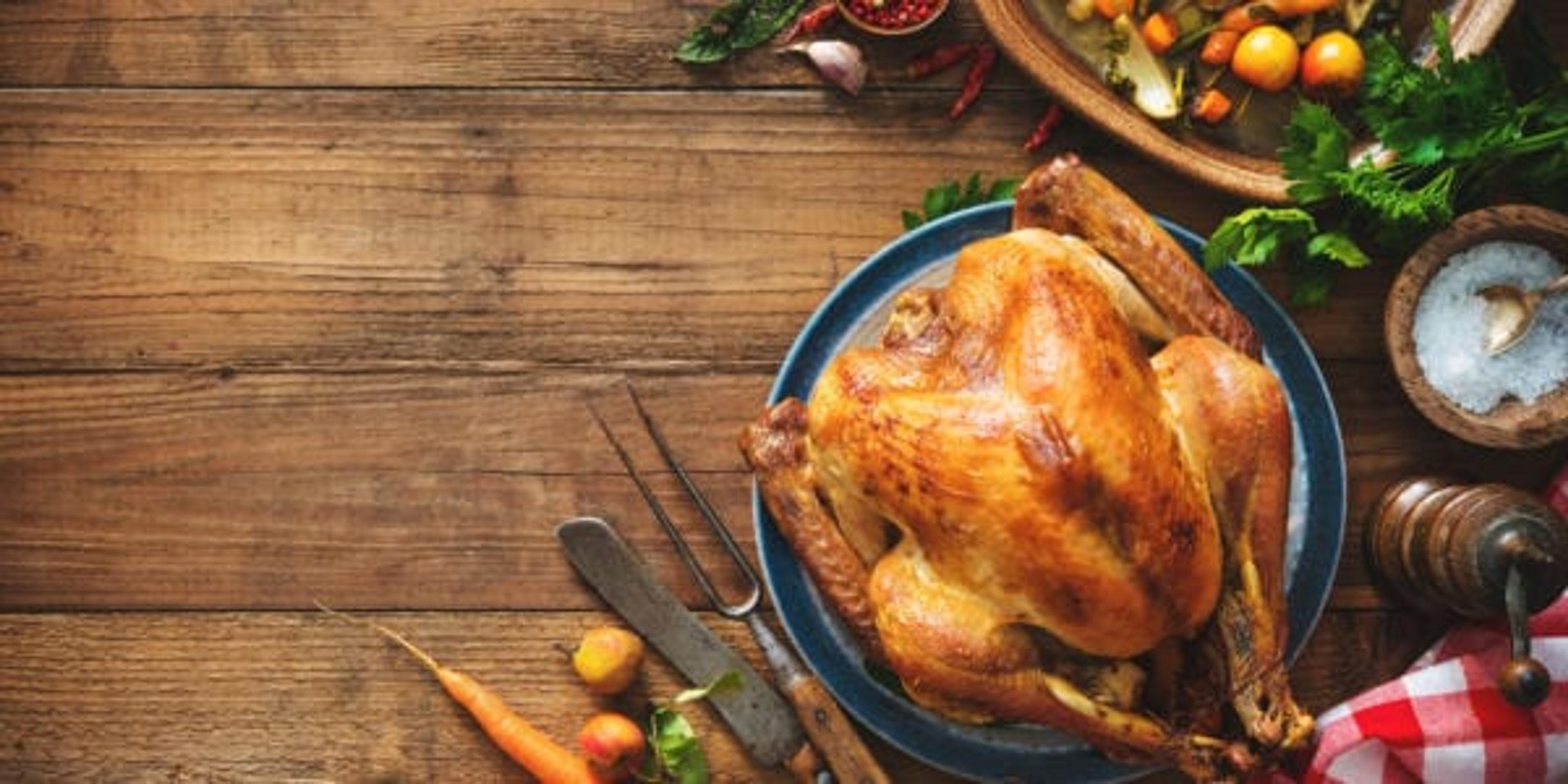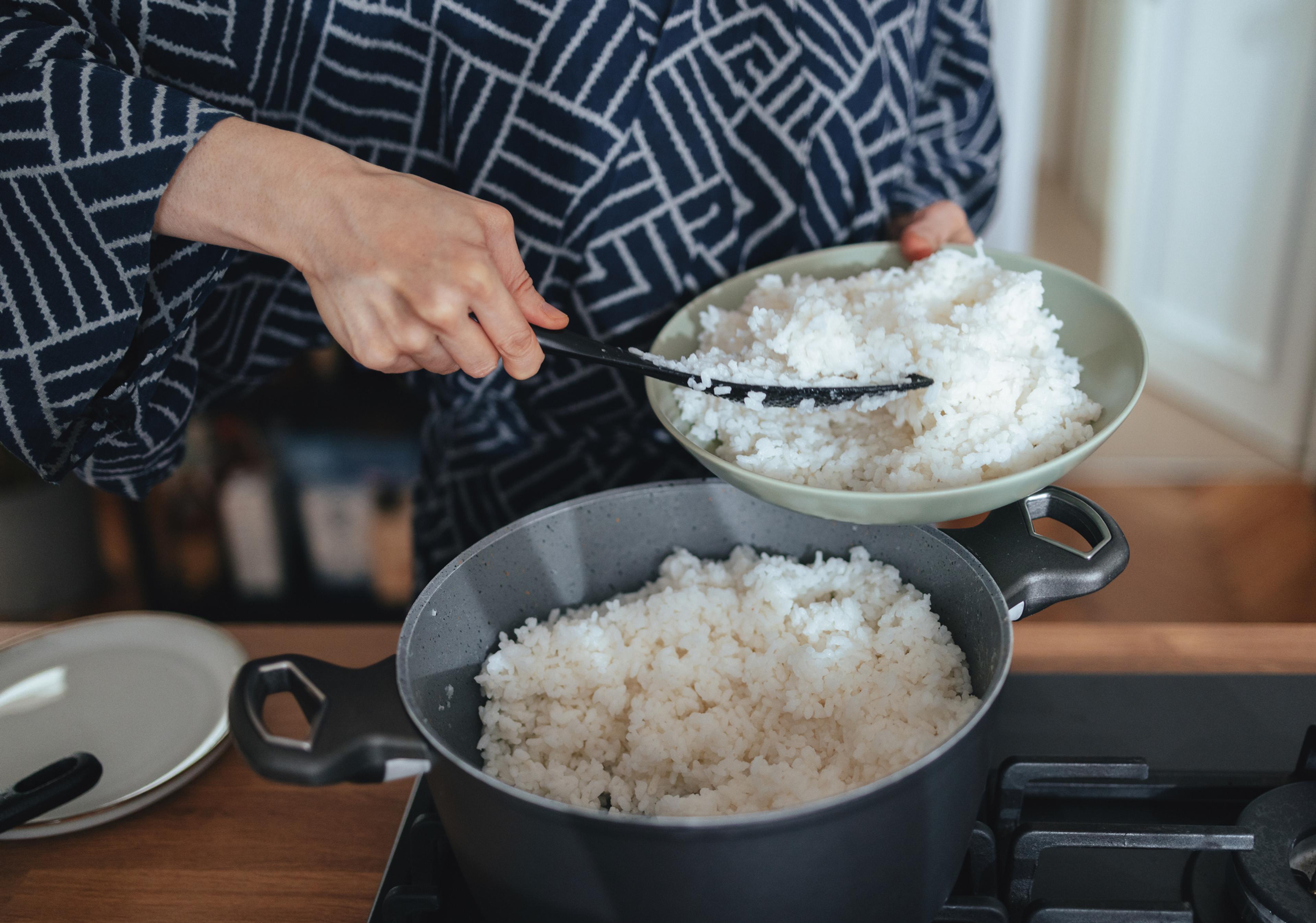Grateful Heart, Healthy Meal: Break Your Thanksgiving Overeating Habits this Year

Julie Bitely
| 3 min read

On Thanksgiving Day, many of us push away from the dinner table feeling uncomfortably full.
In fact, the Calorie Control Council estimates the average Thanksgiving meal packs in 3,000 calories – that’s 50 percent more than the average daily allotment of calories many of us should try to stick to – in one sitting.
If you’re vowing to celebrate without the side of regret a large, calorie-dense meal can leave behind, read on for what to fill your plate with and what to avoid.
- Appetizers: Chips and dips, cheese and crackers and other tasty treats on the appetizer table can all be calorie bombs, plus it’s easy to mindlessly snack on them as you’re catching up with friends and family. This is a great opportunity for you to contribute a healthy option to your family’s table. Bring cut-up raw fruits and veggies with a healthy dip. Store-bought hummus is a great choice for veggies, or you can make this yummy green goddess dressing made with Greek yogurt. Fruit dips made with yogurt and honey are also a healthier option.
- Main dish: In terms of calories, turkey is one of the best choices you can make. A playing card-sized portion (about four oz.) contains approximately 190 calories and six grams of fat. Vegetarian? Tofurkey has just 100 calories per serving, with 13 grams of protein.
- Side dishes: So, this is tricky. Veggies are usually a safe bet, but the dish’s preparation is key in making your choice at the Thanksgiving table. Green bean casserole contains veggies, yes, but it also has calorie-dense cream of mushroom soup mixed in. Here are some ideas to navigate side dishes:
- If you have the option to load up on a simple salad with vinaigrette dressing, that might be your best choice. Otherwise, go for the raw veggies on the appetizer table and dip them in hummus.
- If you absolutely can’t resist the veggie casseroles or sweet potatoes glazed with brown sugar, try to keep portion sizes small. Oftentimes, a bite or two will give you that taste you’re craving without overdoing it.
- If you’re preparing the meal, make smart ingredient swaps, such as replacing that brown sugar with honey or adding good nutrition to mashed potatoes with some cauliflower and white beans added in.
- Dessert: If your family has an entire table devoted entirely to sweets, don’t deprive yourself – it is a celebration, after all. Make your selection, put it on a plate and sit down. Enjoy every bite, savor it and when you’re done, put your plate in the sink and intentionally tell yourself you’ve had dessert and there’s no need to go back for more. If you’re still really craving something sweet, have some fruit.
- Drinks: Stick with water for your meal and enjoy a small glass of wine afterward if you imbibe.
“Healthy eating isn’t all about deprivation, it’s about moderation and making better choices,” said Grace Derocha, registered dietitian, certified diabetes educator and health coach with Blue Cross Blue Shield of Michigan.
“It can be hard to stick to good habits during the holidays but imagining how you’ll feel after the big meal might help,” Derocha continued. “Does anyone like that overly stuffed feeling, anyway? Think about adding good nutrition into your body whenever possible, instead of having a diet mentality. Remember to enjoy yourself and the people you’re with and focus on the reasons you’re thankful, including your health.”
If you found this post helpful, you might also enjoy:
Photo credit: Alex Raths





